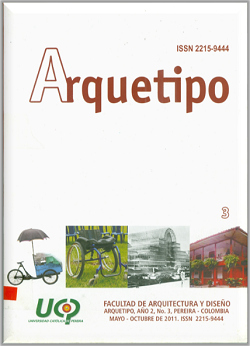Ergonomics for the disabled. A proposal for wheelchair ergonomic and economic
Keywords:
Ergonomics, disability, universal design, usabilityAbstract
Having as premise the purpose of Industrial Design: "Improving the quality of individualand collective life through objects" and highlighting the struggle that has been done forpeople with reduced mobility to achieve equal participation in the context of the daily lifewich has become a paradigm in defense of diversity and search for innovative andinclusive solutions for the future of humanity, Group Design, Technology and Culture (GDTC) through the line of Ergonomics proposed the project "Design Ergonomics anddisability "which generally aim is design a wheelchair validating the design methodologywith emphasis in ergonomics to design for people with reduced mobility by promotingtheir access to different home spaces and facilitating urban welfare and a quality life.
References
Almate, Alicia, Armando Vásquez (2006). Discapacidad lo que debemos saber en América Latina. OPS. Publicación científica y técnica No 616.24
Arhippainen, L., Tähti, M. (2003). Empirical Evaluation of User Experience in Two Adaptative Mobile Application Prototypes. Proceedings of the 2nd International Conference on Mobile and Ubiquitous Multimedia.
Ayudas técnicas y discapacidad (2005). Comité Español de Representantes de Personas con Discapacidad– CERMI. ISBN: 84-609-5203 7. España
Características sobre discapacidad a nivel nacional. Investigación realizada por el centro de estudios e investigación en salud. CEIS. Fundación Santafé de Bogotá. 2008.
Crabtree BF, Miller WL, 1999, eds. Doing Qualitative Research, 2nd edn. London: Sage Publications Inc
Donald, Norman (2006). Diseño emocional, Por Qué Nos Gustan (O No) los Objetos Cotidianos. Editorial Paidos. Madrid
Ekberg Jan (2000). Un paso adelante .Diseño para todos. Proyecto incluye. Madrid: CEAPATIMSERSO.
Libro Blanco (2003). I+D+I al servicio de las personas con discapacidad y las personas mayores. Primera edición, IBV, ISBN: 84-95448-06-8. Madrid
Organización Mundial de la Salud (2001). Clasificación Internacional del Funcionamiento, de la Discapacidad y de la Salud (CIF). Madrid: IMSERSO.
Registro para la Localización y Caracterización de personas con Discapacidad (2008). DANE – MPS. Resumen estadístico Risaralda.
SAMANIEGO DE GARCÍA Pilar (2006). Aproximación a la realidad de las personas con discapacidad en Latinoamérica.Edita: Comité Español de Representantes. Madrid.

